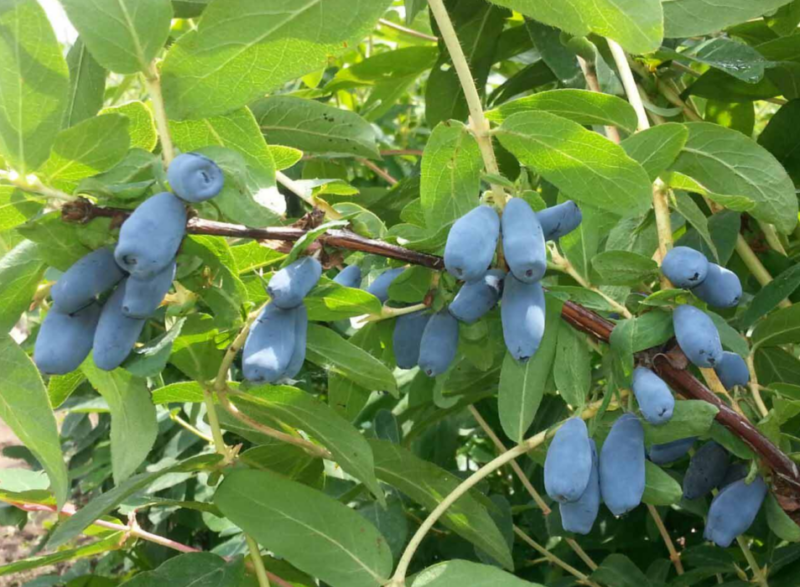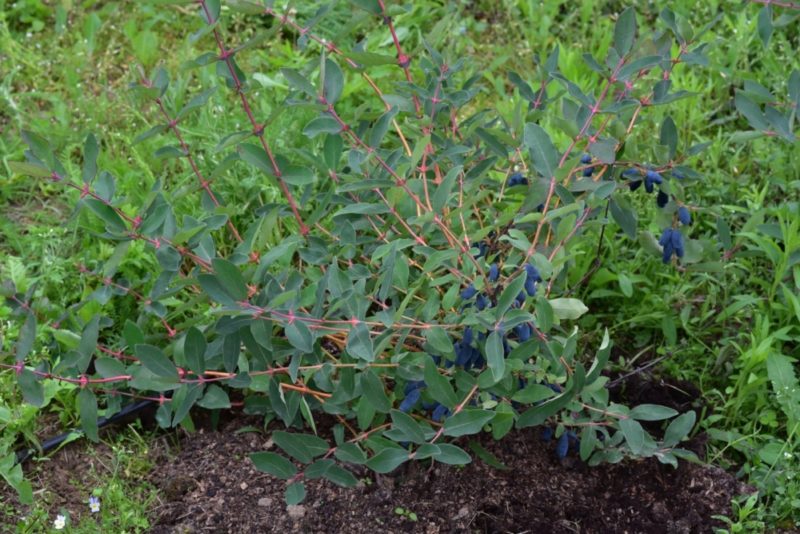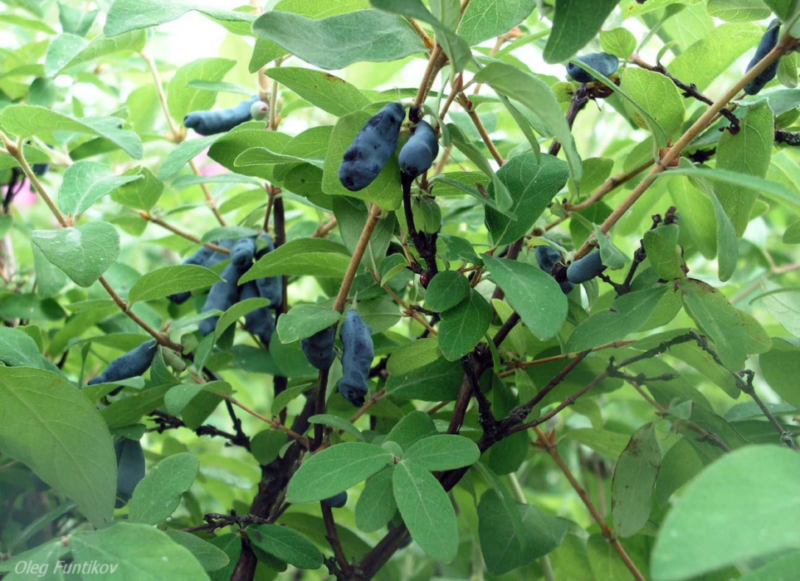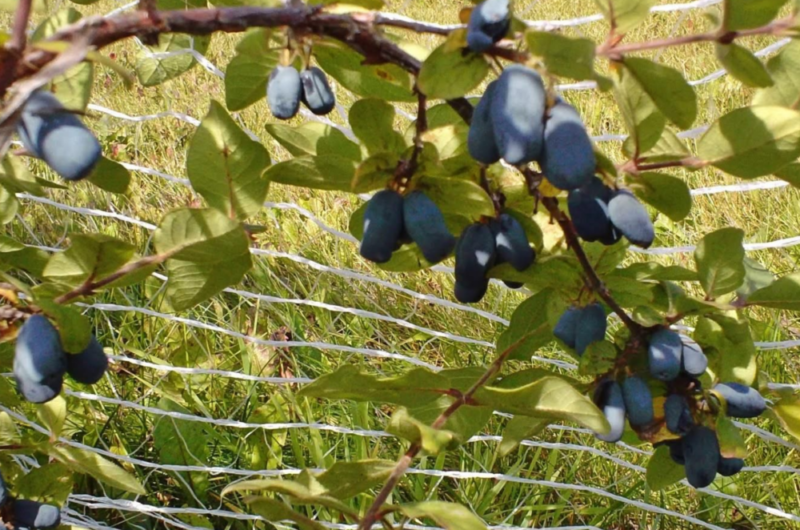Honeysuckle "Bakcharsky Giant" was bred specifically for regions with crackling frosts. This variety is the pride of Tomsk breeders.
Material Content:
Description of the honeysuckle "Bakcharsky Giant"
The berry of the variety is edible, large - up to 4 cm long, without bitterness, pleasant sweet and sour taste, medium ripening period. Up to 3 kg of fruits are harvested from one shrub, and under favorable climates and conditions, the Bakcharsky Giant can produce up to 5 kg of berries from one plant.
If you make a brief description of the variety, then it:
- has powerful bushes with an oval-shaped crown;
- grows to two meters;
- has sprawling branches, large leaves;
- resistant to frost, suitable for cultivation in Siberia.
The variety is self-fertile and needs additional pollination.
Plant pollinators
To collect a large crop of berries "Bakcharsky Giant" pollinators are planted around the bushes. These are mainly other varieties of edible honeysuckle. It is advisable to plant honeysuckle not in rows like raspberries, but in small curtains, and place pollinating varieties around them.
The honeysuckle “Amphora”, “Pride”, “Nymph” and also “Azure” are most suitable as pollinators. Insects, especially bumblebees, which spread pollen from one flower to another, help pollination.
Outdoor landing
Planting of the honeysuckle "Bakcharsky Giant" in autumn is preferable. It is advisable to do this in September, so that before the onset of stable frosts the plant has time to gain strength. If necessary, you can plant seedlings in April, but in this case, their survival will be much worse.
The plant wakes up in March, and the slightest intervention can cause death.Therefore, landing is carried out carefully, trying not to damage the roots. For landing, choose a sunny area, protected from the wind by a fence or other structure. The ideal option is good sun exposure of the crown and shading of the roots. Therefore, often the "Bakcharsky Giant" when planting alternate with other species of honeysuckle so that they give a shadow.
Honeysuckle is suitable for any soil, except for sandstones and clay soil. The ideal soil for this northern berry is fertile, loamy soil. Prefers a slightly alkaline reaction. Therefore, when planting, in order to cope with the increased acidity of the soil, dolomite or lime should be added. This variety must not be planted in lowlands with close occurrence of groundwater.
Preparation for planting begins with clearing the site of weeds and digging.
During the excavation, well-rotted manure or peat is added at the rate of 10 kg per square meter of land.
Wells about 35 cm deep and 45 cm wide are prepared for planting. Be sure to arrange drainage of brick or expanded clay at the bottom of the pits. A layer of fertile soil, pre-mixed with 50 g of phosphorus and 50 g of potassium, is poured onto the drainage.
The seedling is set in the hole in the center and sprinkled with soil. In this case, the neck should be either at the level of the soil, or slightly lower. A planted plant is shed abundantly, compacted and mulched with chopped straw or sawdust. If several seedlings are planted, a step of one and a half meters is left between them.
Features of bush care
Edible honeysuckle is quite unpretentious and does not require such painstaking care as many other berries. Bushes are watered every 5 days, and the next day after watering, the soil is loosened. When rainfall is rarely irrigated.
If during planting the plant was well fertilized, in the next two years it will not need fertilizing. Then it is fertilized every two years in early spring with ammonium nitrate or urea, and in summer, after removal of berries, with organic matter. You can use manure. To increase the resistance of honeysuckle to cold, in the fall you can add potassium salt at the rate of 15 g per plant.
Three years after planting, the first pruning is carried out: dried shoots, branches growing inside the bush are removed. When the bushes reach the age of fifteen, cut off all the old shoots. With such a rejuvenating haircut, branches are only 40 cm long.
Protection against diseases and pests
The "Bakcharsky Giant" is distinguished by its resistance to the appearance of diseases and pests. Plants practically do not get sick if cultivation is not disturbed.
But sometimes aphids, leafworms and caterpillars can attack bushes. People widely use the infusion of tomato tops, which are sprayed with plants affected by pests. If there are a lot of parasites, the bushes are treated with insecticides.
Honeysuckle in the decoration of the garden
Since honeysuckle bushes look very decorative throughout the season, and large purple berries attract everyone's attention, it is often used to decorate the garden. Shrubs are very unpretentious, which allows them to grow even in remote corners of the infield.
Using pruning techniques, the bushes are given a decorative shape. From the honeysuckle create hedges or grow as a single plant in the middle of the lawn. Honeysuckle is a wonderful green background for flowering plants and an excellent neighbor for conifers. It is also an indispensable plant for decorating fences and walls.
Even a novice gardener can grow strong bushes of this northern berry, since caring for it is very simple - this plant will forgive mistakes.

















